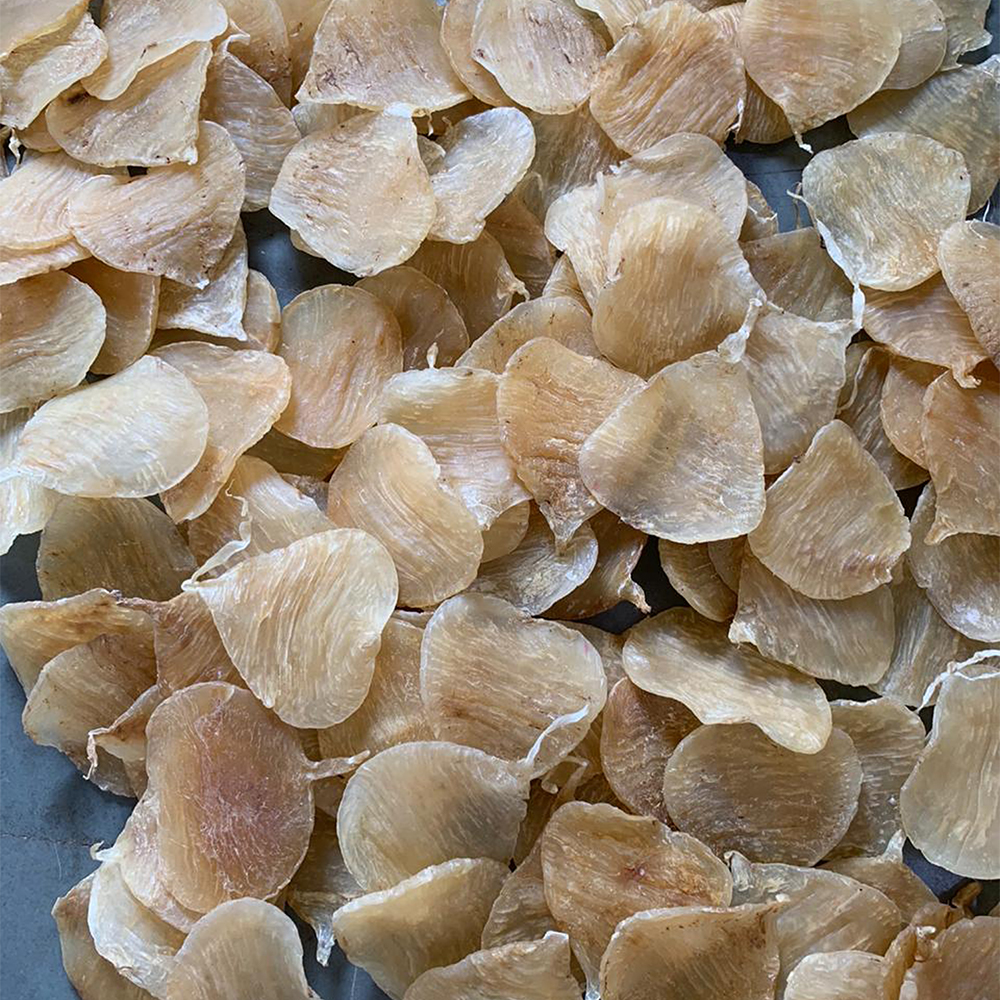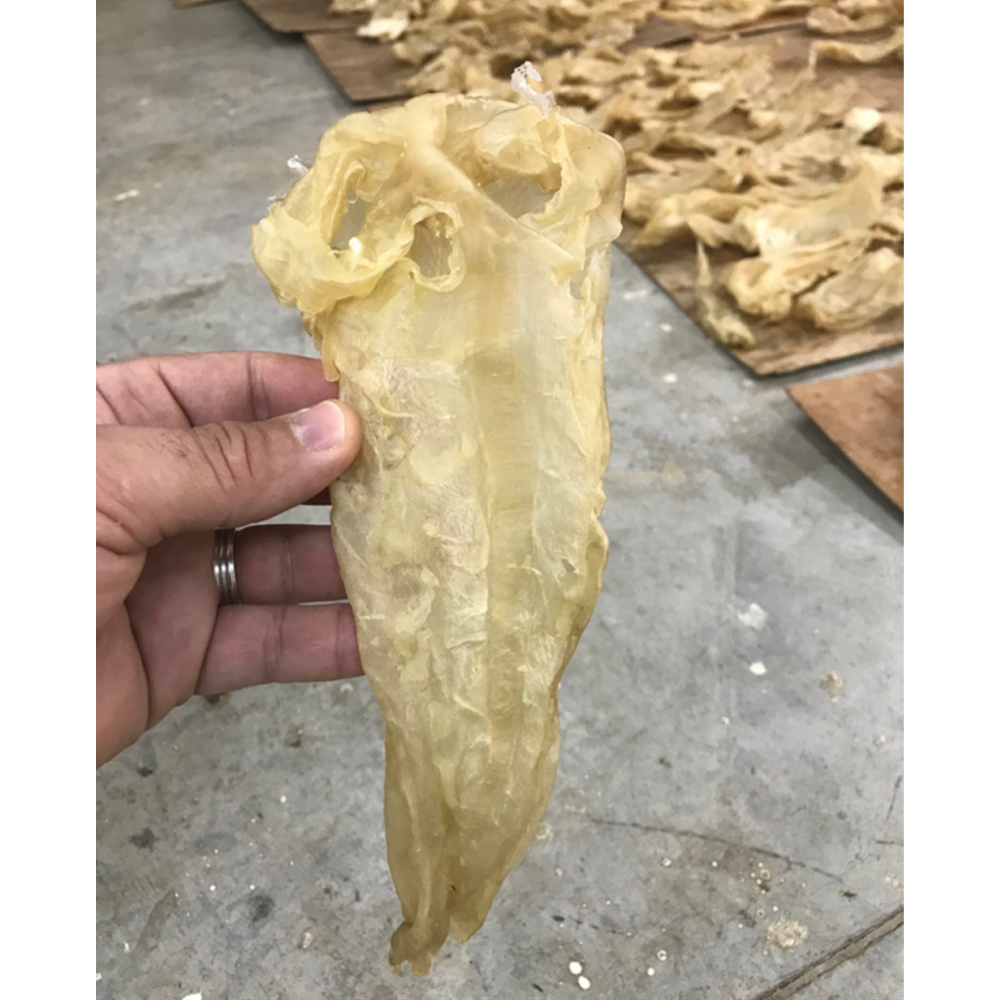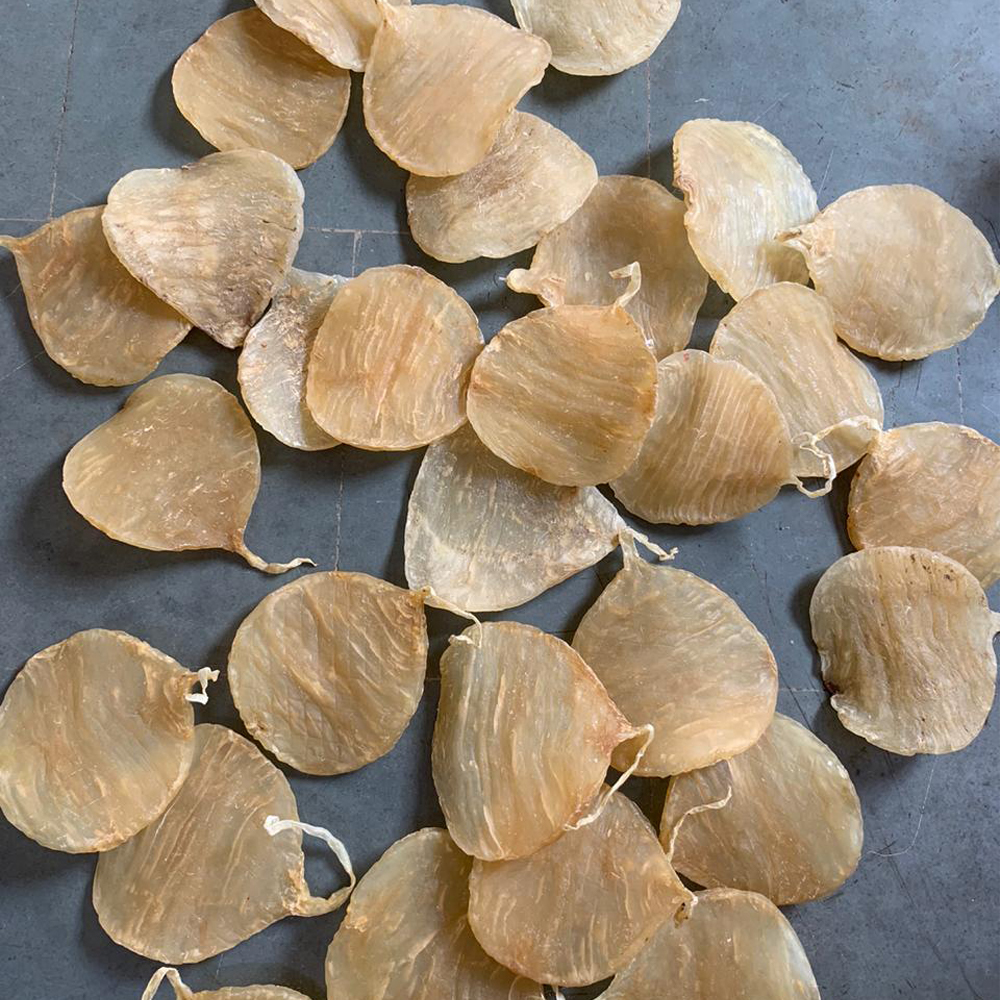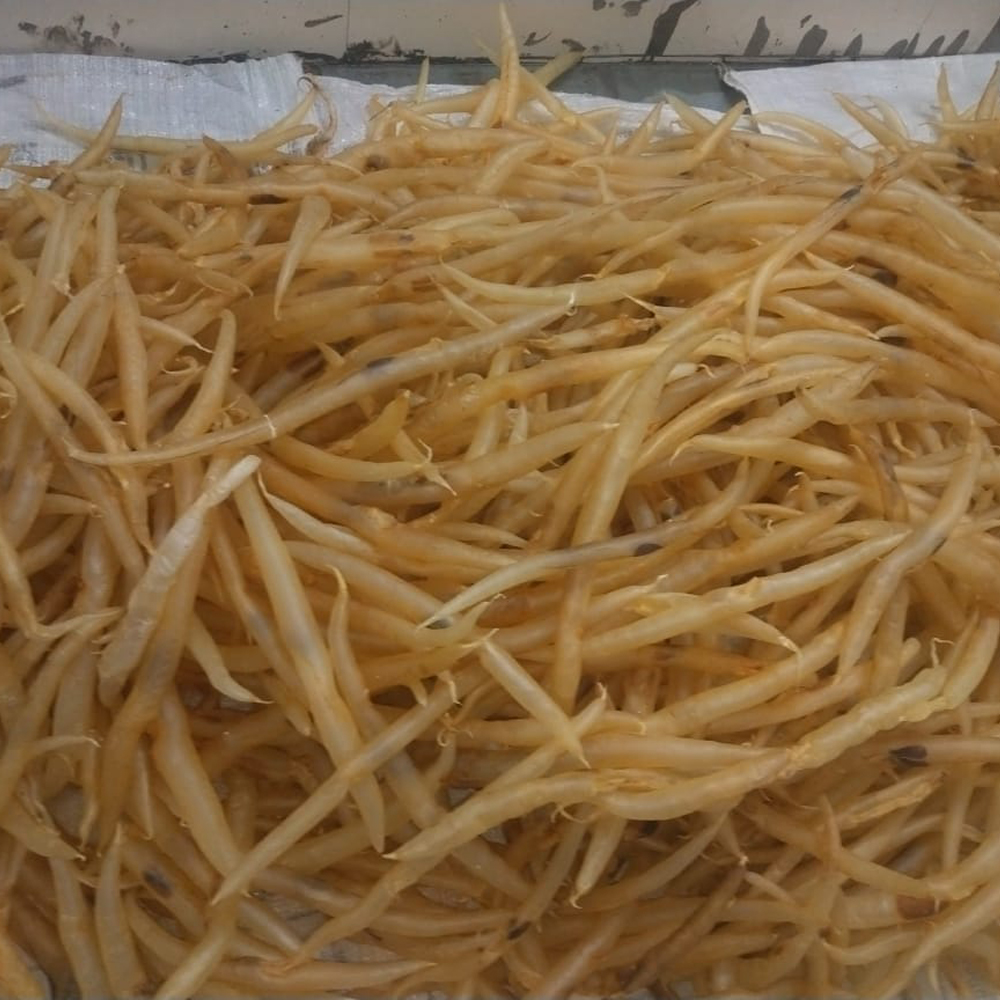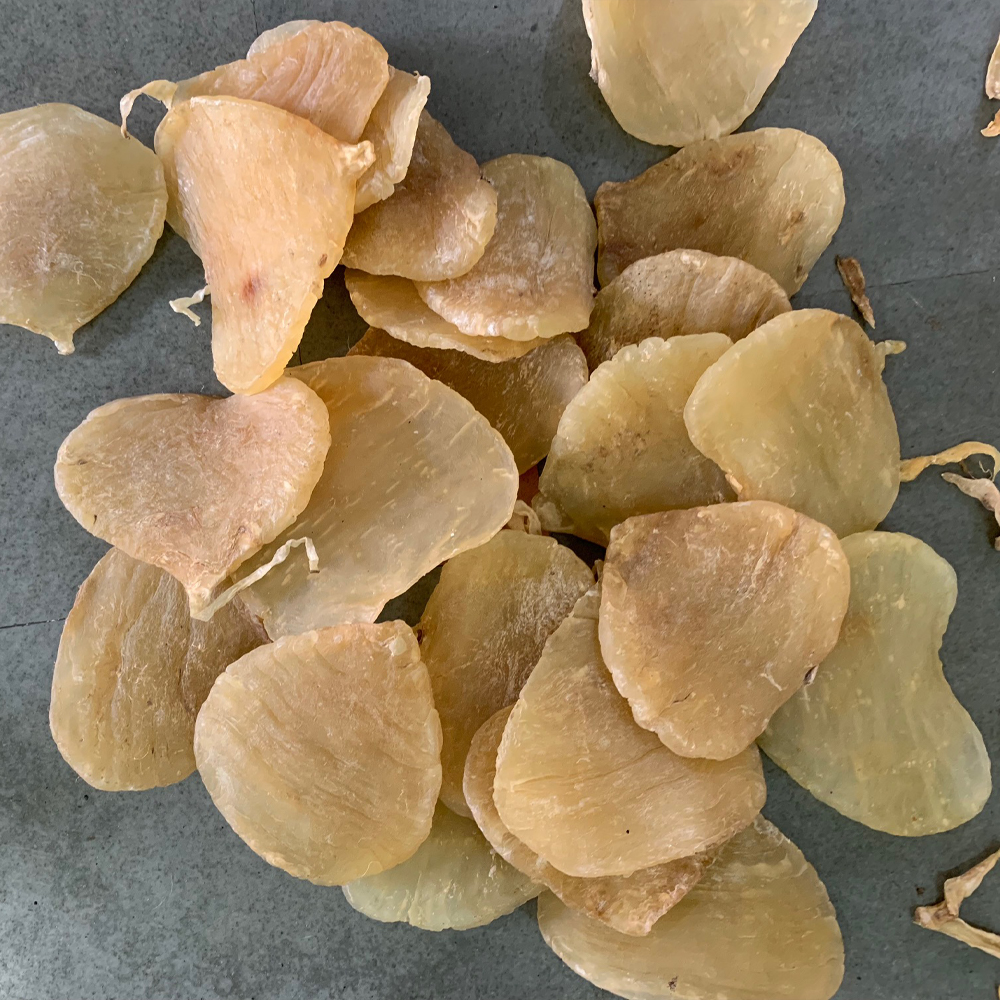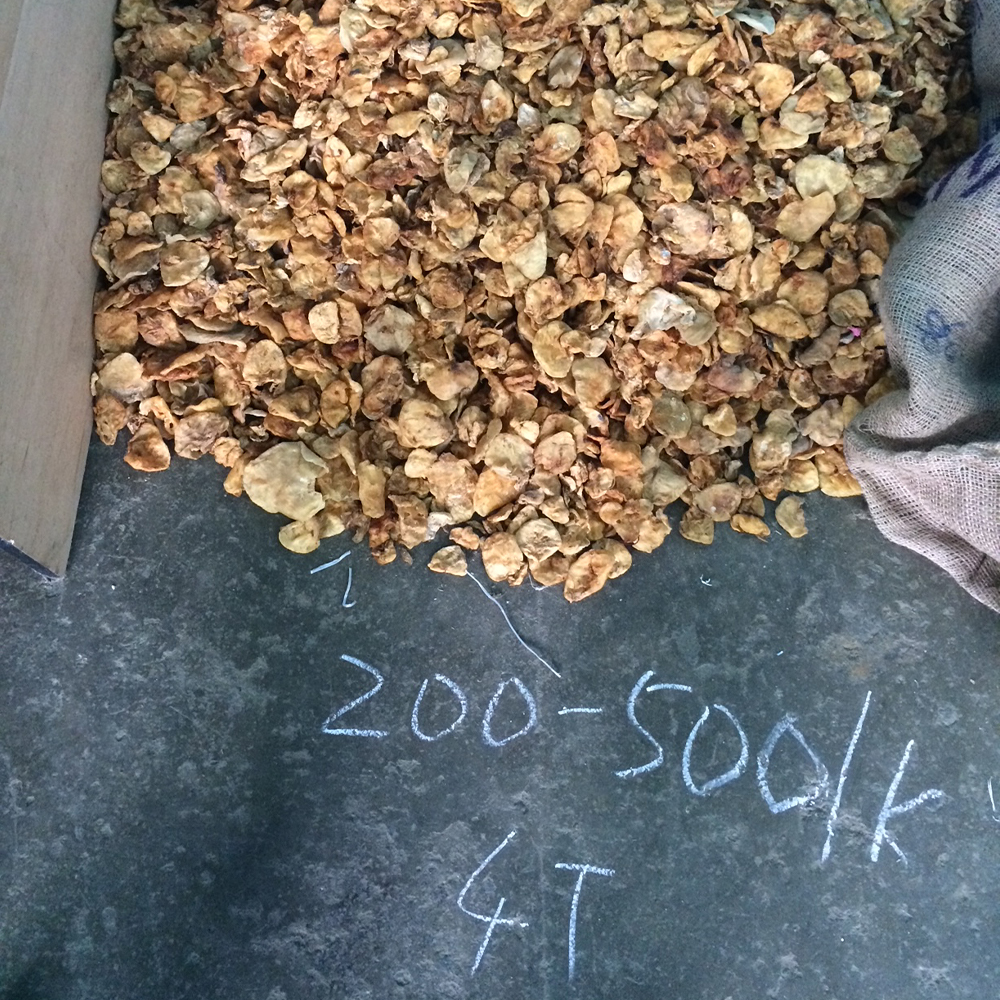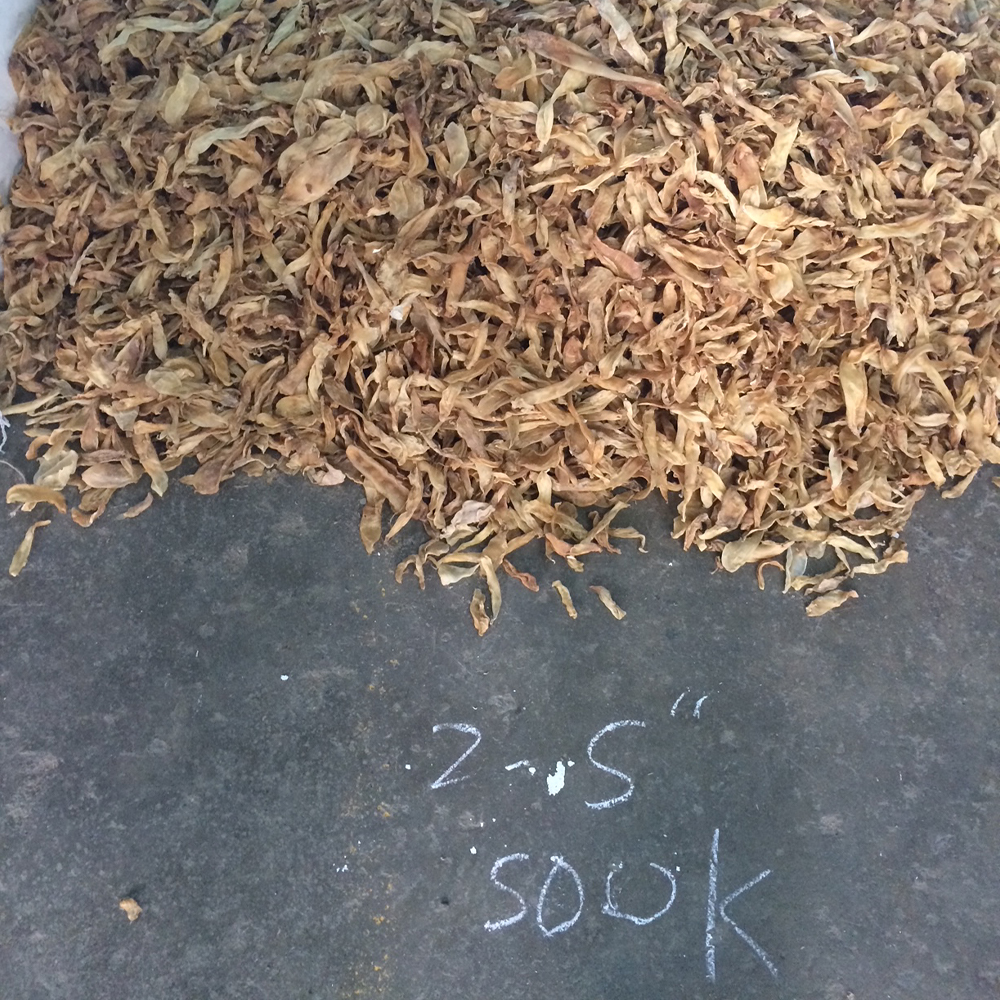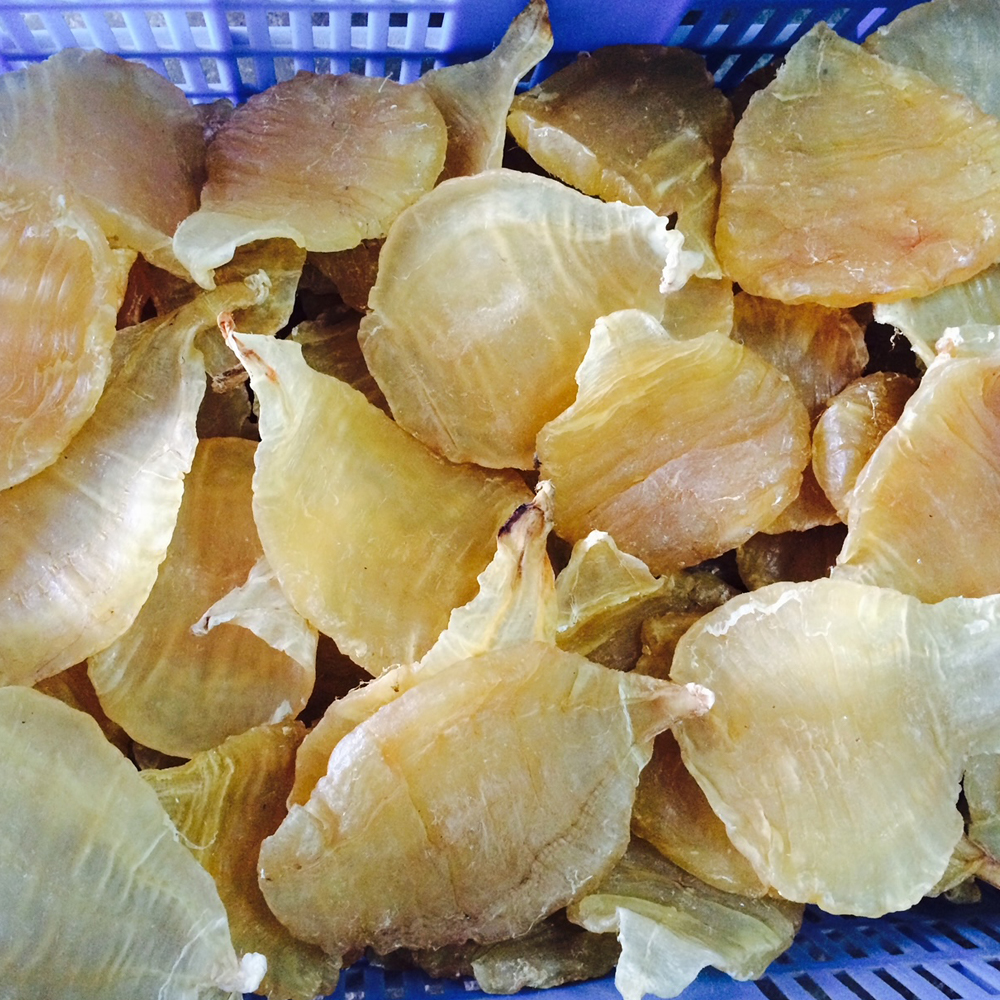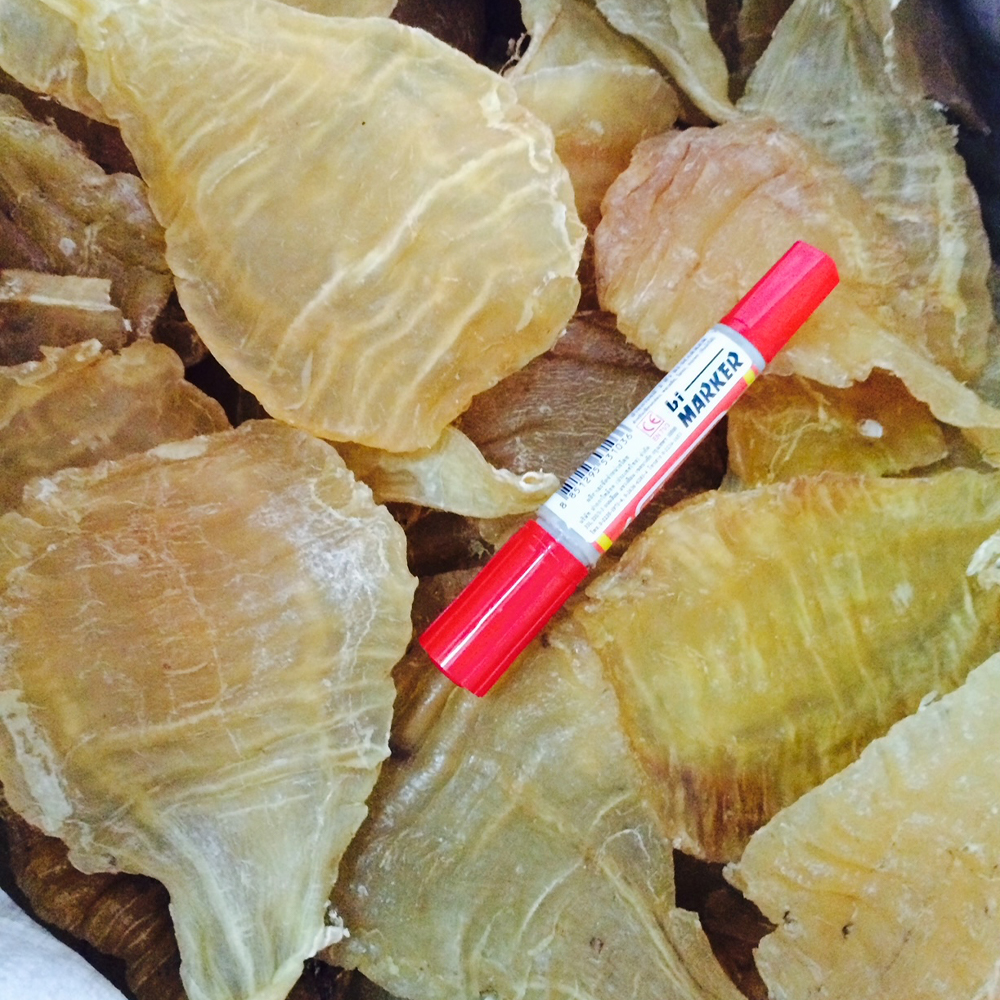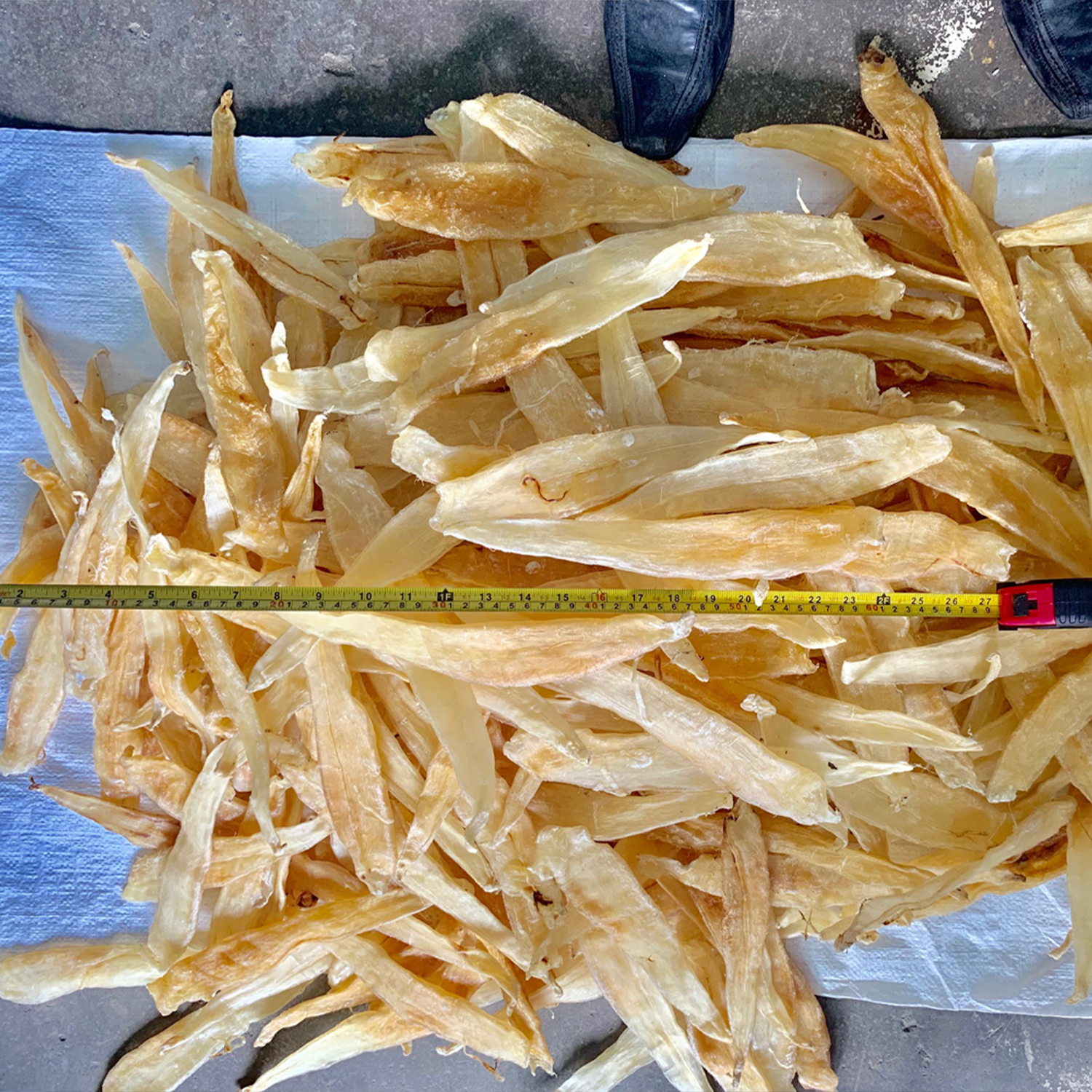These are also know as the Air-Bladder or Swim-Bladder in Fish. The primary function of this Air-Bladder is to act as a float to maintain its position in the water. In some fishes, the air bladder is an accessory to the gills, and in others it acts as a true lung, enabling them to breath. In some, the air bladder has some connection with the organ of hearing and in yet others, it has considerable vocal & sound producing properties. In the western world, it is also know as ISINGLASS, which is used in clarifying beverages, as an adhesive base in confectionary products, currencies, in Indian ink and for glass, pottery & leather.
However, it’s more common usage is as an edible luxury & TCM medicinal products and thus commands
premium prices, if the quality is prepared correctly. Normally the Air-Bladders are compressible sacs
of several membraneous layers rich in collagen situated in the abdominal cavity. As soon as the fish
is landed, the small portion of the fish belly is cut and the air bladder is pulled out. Blood
stains, traces of oil and other extraneous materials like outer black membranes are removed by
washing in cold water. Care should be taken to ensure that the Air-Bladder does not get contaminated
with sand & soil.
Some bladders, like the Eel & Tubular should not be pressed hard so that the internal gas (a mixture
of Oxygen & Nitrogen, with some traces of Carbon Dioxide) does not come out. If gas comes out, not
only the bladder gets flattened but also it will give a bad look. Finally the Air-Bladders are dried
in the sun by hanging them. When temperatures are high, it should be dried in shade under a fan or
air-blower. The final product should be free from fungal, insect & mite infestation and have the
characteristic odour with light yellow transparency.
There are close to 15 types of popular Fish Bladders, and for each species, there is a different
style to prepare & process their Air-Bladders.
The earlier described method is more common for the Eel & Tubular types, whilst with others there
are some variations.
Though we are always experimenting with new species of Air-Bladders, at this moment, the common
types we deal in are listed below and some of their photos are illustrated on this page.
1. EEL:: E1-E6
2. TUBULAR:: T1-T6
3. GMALE:: GM1-GM6
4. GFEMALE:: GF1-GF6
5. CAKE:: C1-C6
6. LEAF:: L1-L6
7. BILI:: B1-B6
8. V-PERCH:: VP1-VP8
